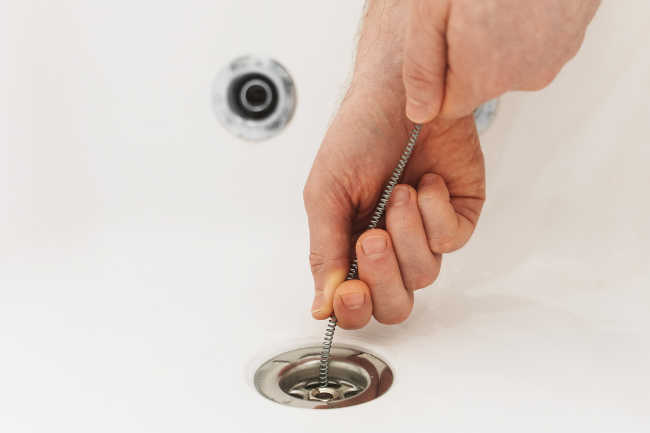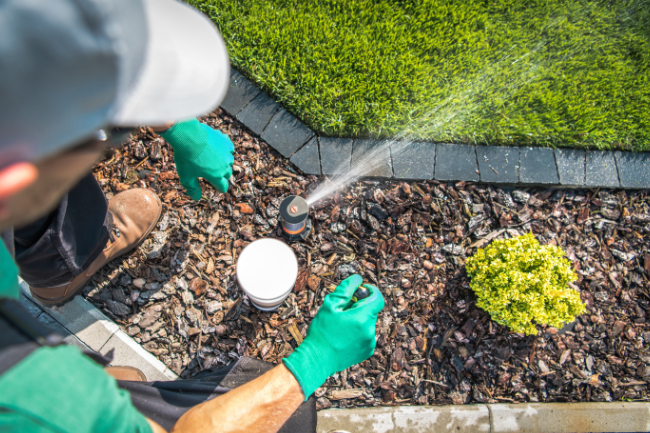Repairing or Replacing Your Home’s Main Water Line
Posted by William Heinselman on

Drops in water pressure, spikes in consumption bills, and water damage on your property are all indicative of water leaks on your property. Preventative repairs and renovations can save thousands on more intensive repairs and replacements later on. However, when damage is extensive and pipe replacement is necessary, homeowners are encouraged to consider trenchless technology, which is an effective, quick, and less destructive method of pipe replacement.
Here, we have outlined how to determine the source of water leaks in and around your home, as well as appropriate corrective measures you can take to fix your home’s water lines.
Identifying a Water Leak
The most important preliminary step in replacing your home’s main water line is accurately finding leaks present in your home, and determining the root and extent of water line damage. Even small, slow leaks stack dramatically over time and can add up to 30 gallons of water use per day. Finding these leaks is a relatively simple process, and the resulting early repairs can save you thousands of dollars in later renovations and water damage.
The Power of the Water Meter
The most straightforward method for detecting water leaks utilizes your home’s water meter, commonly located in front lawns under a concrete or metal lid. Many of today’s water meters feature a leak detection gauge, which reacts to the steady and small volume of water usage indicative of a leak. Even without this gauge, standard dials and gauges should only be moving if water is presently in use.
After learning how this meter functions, you can begin to shut off all water-consuming items and utilities in your home; this means everything that uses water, from conventional sinks to freezer ice-makers. Once all water-consuming items are shut off, check your water meter and record the dial and time. Take a 20- to 30-minute break then reread your water meter. Without a leak, this meter should stay in the exact same location as your earlier assessment. If the dial’s location or numerical reading has changed, there is a high possibility you have a leak.
Inside or Outside? Closing In On a Leak
Determining whether your leak problem occurs inside your home or between your home and your water meter is an even simpler process than the previous step. To find this information, keep all water-consuming items off and simply turn off your home’s water valve. If the leak is in your home, the meter will stop moving and reading water use; if the meter’s dials continue to move with this valve shut off, the leak is likely in the lateral line between your home and the water meter, or in your irrigation system.
Finding a leak between your home and the water meter requires a relatively simple property examination. Signs of moisture, including damp patches on your lawn, pooling water, or lush grass concentrations can be indicative of a leak’s location. If these are not present, and the dials on your meter still move with your home water valve shut off, your property’s irrigation (sprinkler) system may be the source of the leak.
Checking Irrigation
With your home’s water valve off, also switch off your irrigation valve. If your water meter stops reading for water consumption, the leak is likely in your irrigation. At this point, the most practical way of finding a leak is knowing the common signs to look for: dampness, sounds of water flow (dripping or ‘hissing’ noises), and pools or odors. A copy of your irrigation system’s layout is an invaluable reference in this step.
Common causes of irrigation leaks include:
- Recycled water, or “greywater,” that may contain animal or plant matter that can create a blockage.
- Soil shifting, which can rupture irrigation lines.
- Animal burrowing patterns or other interferences.
- Root infiltrations, which can crush, crack, and tear open pipelines
Renovations and Repair Options

So, you’ve identified a leak, narrowed down the source, and must now consider renovation options. If the leak is a result of damage to your home’s main water line (lateral line), your biggest dilemma may be deciding between repairing or replacing the line. This is all determined by the extent of the damage that is causing your leak.
Trenchless Pipe Repair and Replacement
Today’s pipe repair and reinforcement operations can be done without trenching methods (methods that require expensive and damaging pipe digging). Trenchless replacement methods are also available for pipes beyond repair.
These trenchless pipe renovation options make use of air pressure and fiberglass Perma-liners to cover, repair, or replace damaged pipelines, including damage in your home’s main water line. This non-obtrusive option is an attractive alternative to trenching replacements, as soil shifts and ground movements can make pipe repairs in regions with frequent physical ground activity problematic, such as pipe repairs in Sacramento, CA.
Also referred to as cured-in-place pipe (CIPP) methods, these techniques resolve leaks and other problems presented by old or damaged pipes without extensive property damage, and the finished/repaired pipes typically last up to 50 years. Also much quicker than trenching methods, there is no loss of flow when performing trenchless renovations.
Sectional Point Repair
For smaller leaks and damages, a sectional point repair is a very effective option for pipe repairs. This method consists of using a smaller, more precise patch of fiberglass and resin (identical to typical trenchless techniques) to cover an exact damaged area. A pipe evaluation and use of video inspection can pinpoint the precise solutions for individual circumstances.
Call Express Sewer for Water Line Repair
Despite these self-assessment options for finding leaks in your home and deciding between repairs or replacements of pipelines, plumbing service professionals can lend a strong hand in determining these factors. Reaching accurate conclusions on the extent of pipe damage is crucially important in choosing appropriate renovation or replacement options.
For more assistance in detecting water leaks within your property, or learning the great benefits of trenchless repair and replacement options in resolving leaks and pipe damage, contact us today or check out our additional blog material on pipe renovations.
Topics: Home Plumbing, Plumbing Tips







